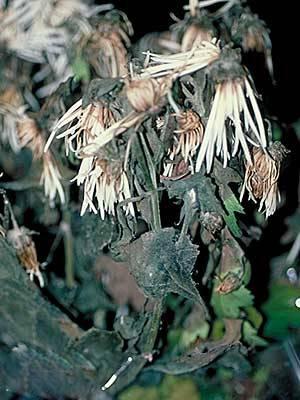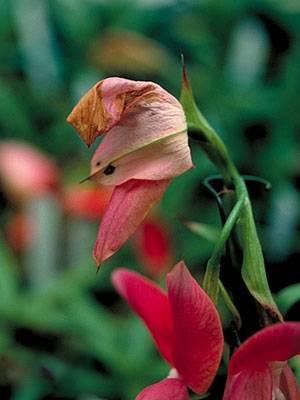Symptoms of gray mold on indoor plants
-
Gray mold or Botrytis blight often begins with relatively large grayish to tan areas on older leaves or spent flowers.
-
The dusty gray spores of the fungus are easily seen and infected areas can rapidly enlarge and cause tissue collapse.
-
This fungus primarily infects older tissue and generally is not a serious pathogen unless infection conditions are ideal.
-
Optimum infection conditions would include wet leaves, high humidity, cool temperatures and cloudy overcast days.
Management strategies
-
Any method that will lower the humidity, decrease leaf wetness or increase air circulation will help to lessen the chances of infection.
-
Watering should be done early in the day to allow leaf surfaces time to dry quickly.
-
Space plants so that air can circulate between them to help reduce moisture.
-
Registered fungicides can be used, but in most home conditions, removal of infected plant parts and adjustment of environmental conditions to drier conditions should help manage this disease.




